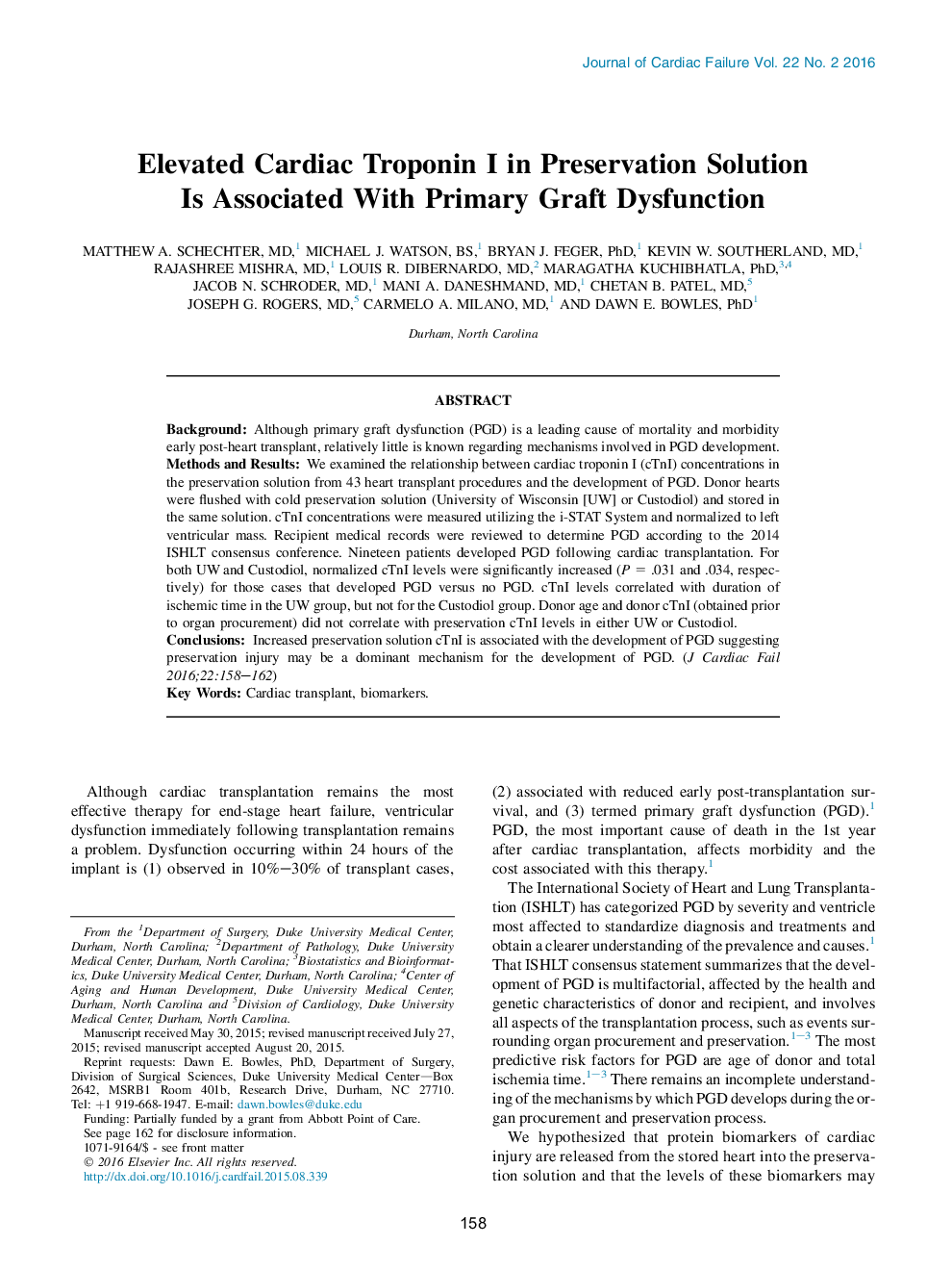| Article ID | Journal | Published Year | Pages | File Type |
|---|---|---|---|---|
| 2958461 | Journal of Cardiac Failure | 2016 | 5 Pages |
BackgroundAlthough primary graft dysfunction (PGD) is a leading cause of mortality and morbidity early post-heart transplant, relatively little is known regarding mechanisms involved in PGD development.Methods and ResultsWe examined the relationship between cardiac troponin I (cTnI) concentrations in the preservation solution from 43 heart transplant procedures and the development of PGD. Donor hearts were flushed with cold preservation solution (University of Wisconsin [UW] or Custodiol) and stored in the same solution. cTnI concentrations were measured utilizing the i-STAT System and normalized to left ventricular mass. Recipient medical records were reviewed to determine PGD according to the 2014 ISHLT consensus conference. Nineteen patients developed PGD following cardiac transplantation. For both UW and Custodiol, normalized cTnI levels were significantly increased (P = .031 and .034, respectively) for those cases that developed PGD versus no PGD. cTnI levels correlated with duration of ischemic time in the UW group, but not for the Custodiol group. Donor age and donor cTnI (obtained prior to organ procurement) did not correlate with preservation cTnI levels in either UW or Custodiol.ConclusionsIncreased preservation solution cTnI is associated with the development of PGD suggesting preservation injury may be a dominant mechanism for the development of PGD.
